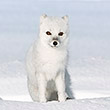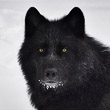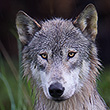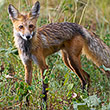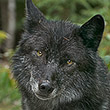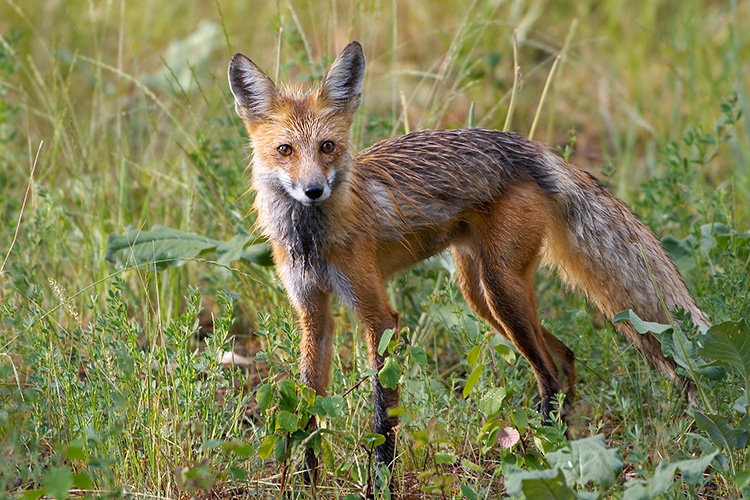
Availability: Undetermined - Enquiries?
In the Field
Rain-soaked Red Fox in Sunlight. Findlay Creek, BC, Canada. June 11, 2006.
While Red Foxes are extremely widespread and common in the northern hemisphere, they're very rare in the Columbia Valley of the East Kootenays. And even more rare in my backyard - this is the only fox we've ever seen on our property. This one appeared just as the sun came out after a major downpour. The way the fox trotted directly to our bird feeder and started eating the spillage told me he/she had been around before!
Behind the Camera
Rain-soaked Red Fox in Sunlight. Findlay Creek, BC, Canada. June 11, 2006.
Digital Capture; Compressed RAW (NEF) format; ISO 100.
Nikon D2X with Nikon 200-400 mm f/4G ED-IF AF-S VR lens @ 400 mm (600 mm equivalent with digital conversion factor) supported on bean bag. VR turned to "On" and in "Normal" mode.
1/60s @ f4.5; no compensation from matrix-metered exposure setting.
At the Computer
Rain-soaked Red Fox in Sunlight. Findlay Creek, BC, Canada. June 11, 2006.
RAW Conversion to 16-bit TIFF, including first-pass sharpening, using Phase One's C1 Pro. Multiple RAW conversions (at different exposure settings) to retrieve highlight detail (in this case the white patches on the left side of the foxes face) and shadow detail (in this case on the foxes flank and lower hind leg).
All further digital correction on 16-bit TIFF file using Adobe's Photoshop CS2, including compositing and masking of various exposure versions, selective saturation enhancement, and selective sharpening for web output.
Conservation
Rain-soaked Red Fox in Sunlight. Findlay Creek, BC, Canada. June 11, 2006.
Ten percent of the revenue generated by this image will be donated to Wildsight.
Species Status in Canada*: Not "Threatened" or "Endangered".
The Red Fox (Vulpes vulpes) has the widest geographic distribution of any member of the order Carnivora and is found throughout the northern hemisphere. Its range is estimated to cover 70 million sq. km. As such, it is far from endangered. Interestingly, it has been documented that the Red Fox is expanding its range northward in Canada and elsewhere, and it is possible that this geographic expansion is related to global warming. This northward range expansion appears to be coming at the expense of the smaller and less aggressive Arctic Fox. The Red Fox out-competes the Arctic Fox for food (and for denning sites) and is a severe predator of juvenile Arctic Foxes. Indeed, the Red Fox pictured here has a reason to look content - it had killed, partially consumed, and cached an adult Arctic Fox shortly before this image was captured!
This Red Fox was photographed in the Columbia Valley of southeastern British Columbia. Wildsight is an effective conservation organization that protects biodiversity and promotes sustainable communities in Canada's Columbia and Rocky Mountains. Support for Wildsight, through donation or becoming a member, will help ensure that they remain effective in their efforts to conserve threatened or endangered species and ecosystems.
*as determined by COSEWIC: The Committee on the Status of Endangered Wildlife in Canada


















